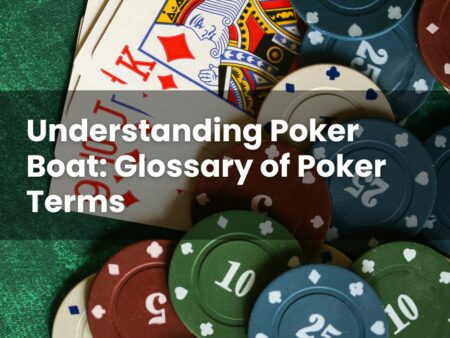In poker, recognising the different types of players at the table can shape how the game unfolds. One type that often stands out is a calling station, a player known for frequently choosing to call bets rather than folding or raising.
Having a sense of how such a player behaves can offer clearer insights during a game. Whether someone is new to poker or has played before, noticing this style often shifts the way a hand is approached.
This blog post delves into what a calling station is, why some players tend to call frequently, signs to spot them, and how to adapt accordingly. It also highlights common pitfalls and discusses whether this approach is always viewed negatively. If you are getting familiar with the game, these insights provide a thoughtful guide before joining any games, online or live.
Read on to learn more.
What Is A Calling Station In Poker?
A calling station tends to stick around through many betting rounds by matching bets rather than taking the initiative. Rather than pressing the action, they often opt to see more cards, even if their starting hands aren’t particularly strong.
Some players who take this approach enjoy the rhythm of following the betting, while others may find it challenging to fold. Many who fit this pattern are still learning how to assess their cards and the overall flow at the table. Over time, their repeated decisions to call instead of raise become noticeable.
The telling factor is not just a single choice to call but the repeated pattern across several streets. This steady approach lays the groundwork for how to approach playing against them.
Why Do Players Call Too Often?
There are a variety of reasons behind frequent calling. For some, folding might feel like missing out, so they prefer to continue hoping their hand improves. Beginners, especially, might choose to call often because they feel uncertain about how strong their cards truly are.
Some players stick around because they dislike backing down and want to see what their opponent reveals at showdown. Others feel committed once chips are in the pot, reluctant to withdraw even when circumstances change.
Misjudging the situation also plays a role. When someone focuses mainly on their own cards without considering position, bet size, or the community cards, calling can seem like the natural option—even if it’s less effective. Having simple guidelines before sitting at a table can help manage these tendencies.
Knowing what to watch for makes spotting this approach easier in practice.
Key Signs You Are Facing A Calling Station
Certain behaviours often indicate you’re up against a calling station, especially when observed over multiple hands.
They tend to call bets frequently before and after the flop, often with hands that are not particularly strong. Their raises are rare, and when they do happen, it usually signals a genuinely strong hand.
Such players also tend to reach the showdown more often than others, often showing holdings that are average or below average. Additionally, their reaction to bet sizes is fairly consistent—they call small, medium, and larger bets with little change in behaviour.
Once these traits become familiar, planning your next move becomes more manageable.
How To Adjust When Playing Against A Calling Station
If you choose to play poker and find yourself facing a player who calls consistently, a straightforward approach works best. Focusing on betting when you have a made hand usually earns more chips. Because they tend to continue with a wide range of cards, strong hands like top pairs or two pairs can do well by betting multiple streets.
Trying to conceal strength by playing slowly often hands over value, since these players are willing to call with less. Attempts to bluff may not pay off as well because they’re less likely to fold.
On the other hand, betting modestly with decent but not outstanding hands might be profitable, since they might pay you off more than expected.
Bet sizes also play a part. Bigger bets with solid holdings generally bring in more chips as they are more likely to call. However, it’s important to use bet sizes you’d normally choose with other hands, so your strategy doesn’t become too predictable. Acting last in a round also helps, as it allows for clearer decision-making about how much to bet on each street.
The goal isn’t to outwit with complicated plays but to gather consistent gains when ahead, while avoiding unnecessary losses from unlikely bluffs.
Common Mistakes To Avoid Against Calling Stations
A common misstep, if you’re facing this type of player, is relying too heavily on bluffs. Since calling stations tend to stay in the hand more often than others, plays that might push someone else to fold can end up costing you here, as they’re more likely to call you down.
Another issue is betting too cautiously when you’re ahead. If an opponent is likely to call no matter what, betting small with strong hands often means missing out on extra value. It’s usually better to build the pot gradually and reserve larger bets for moments when your hand can comfortably handle a call.
Overcomplicated plays—like check-raises or delayed bluffs—often fall flat, too. These moves depend on the other player folding at a key moment, which doesn’t happen as often with this style. And when a calling station does choose to raise, it’s typically a sign of real strength, so holding on with a marginal hand can be costly.
Finally, it’s easy to get frustrated when a weaker hand sticks around and ends up winning. That kind of result can lead you to force the action or stray from your usual approach. Staying composed, sticking to your plan, and setting clear limits before you play can help you stay on track throughout your session.
Is Being A Calling Station A Bad Thing?
Whether this style is seen as a drawback really depends on the context. If you choose to play this way—calling frequently rather than folding or raising—you may find that, over time, you’re often paying off stronger hands. Sticking with weaker holdings across multiple streets can make it harder to come out ahead over several sessions.
That said, this approach isn’t without its moments. In softer games or against opponents who overestimate their hands or bluff too often, calling regularly might allow you to catch them out and collect a few pots. If others misjudge the situation, a more passive style can sometimes work to your advantage.
As games become more competitive, though, the gaps in this strategy tend to show. Players who are thoughtful about when to stay in, when to let go, and when to apply pressure usually find themselves in a stronger position.
If you’re aiming to improve your game, continuing to learn is one of the most useful things you can do. Getting a better feel for when to call, fold, or raise—and understanding factors like position, board texture, and pot odds—may help lead to more consistent outcomes. Set clear limits, stick to amounts you’re comfortable playing with, and go into each session with a basic plan.








